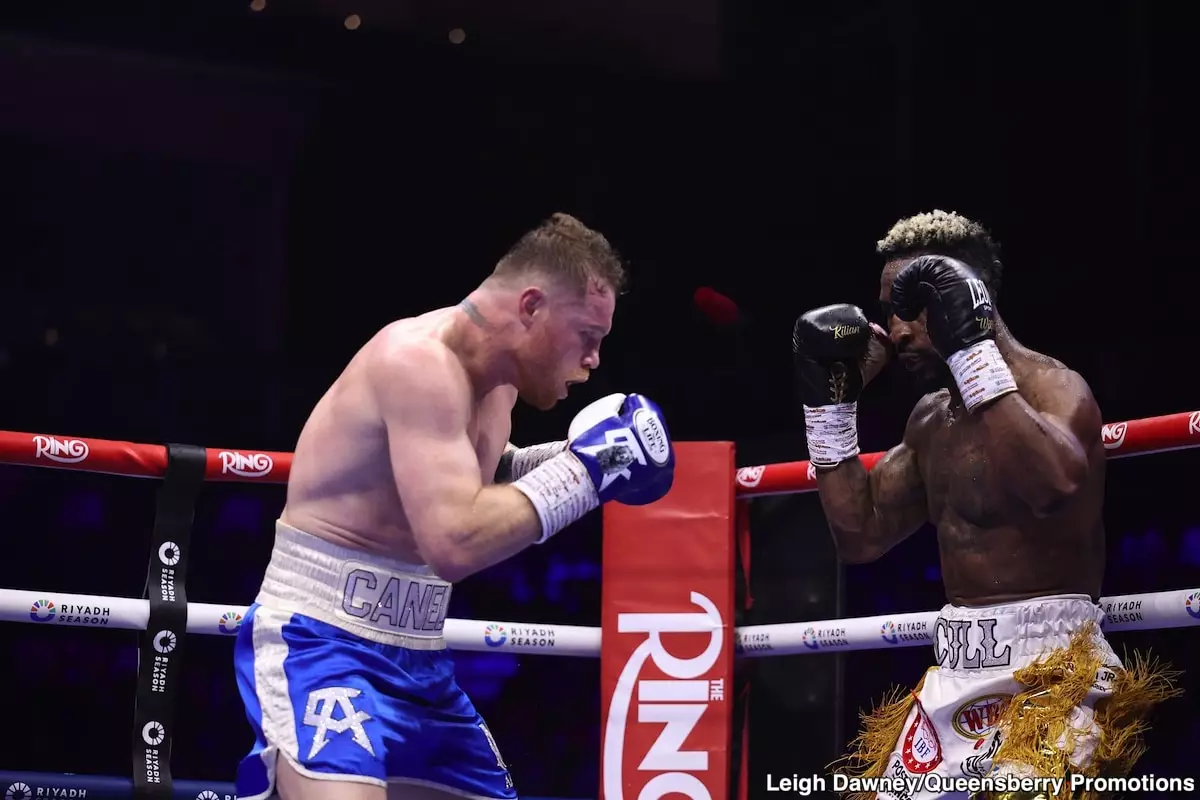In the high-stakes world of boxing, strength, size, and experience often play decisive roles in determining the outcome of a bout. When Canelo Alvarez steps into the ring against Terence Crawford, these factors become even more pronounced. The sheer physical presence that Alvarez brings to the match cannot be overstated, and it positions him as a formidable challenge for any opponent—especially one moving up multiple weight divisions. The perception that power can compensate for a lack of recent activity or younger age is widespread. As a fighter, Alvarez’s ability to physically dominate is a reminder that in boxing, size and strength remain formidable tools, capable of turning the tide even against the most skillful adversaries.
The Age Factor and Its Impact on Performance
While Crawford’s undefeated record and skill set are impressive, questions about his current physical state cast doubts on his efficacy at 168 pounds. Age inevitably influences athletic performance, and at nearly 38 years old, Crawford visibly shows signs of wear and tear. His recent performances suggest a fighter who may no longer possess the same burst or resilience as in his prime. This aging process, accelerated by the demanding weight jump, could diminish his agility, reflexes, and endurance—traits crucial when facing a strategic and powerful opponent like Alvarez. The toll of aging isn’t just physical; it also affects mental sharpness and recovery, essential components in a grueling twelve-round contest.
The Strategic Gamble of Moving Up in Weight
Terence Crawford’s decision to challenge himself by stepping into a higher weight class without a proper tune-up is a reckless gamble. Typically, fighters prefer to test the waters, gaining experience at the new weight before taking on elite opposition. Crawford’s rapid jump from 154 to 168, with little time to acclimate, places him at a significant disadvantage. This move not only exposes him to Alvarez’s power but also raises concerns about his ability to withstand the physicality of the bigger man. Fighting weight, after all, isn’t just about putting on muscle—it’s about adaptation, timing, and conditioning, elements that Crawford’s recent inactivity and lack of preparation seem to undermine.
The Psychological and Motivational Edge
Money and legacy are powerful motivators in boxing, and Alvarez’s hefty payday as reported indicates a fighter highly motivated to perform at his best. When an athlete earns such a substantial paycheck, it elevates the stakes—and naturally, the level of effort. Alvarez’s commitment to this fight is not just about victory; it’s about protecting his reputation and cementing his legacy as one of the sport’s greats. Crawford, although talented, might be at a psychological disadvantage here, especially considering that he’s coming into a fight against a larger, more experienced opponent without recent momentum. The mental strain of such a high-profile clash can sway the outcome as much as physical strength.
Fight Strategy and the Likely Outcome
Considering the tactical landscape, Alvarez’s approach could be straightforward: use his size and power to dictate the pace while conserving energy for crucial moments. His past fights against fighters of comparable or lesser caliber demonstrate a capacity for selective aggression and strategic conservatism, which is vital when risking so much financially and professionally. Crawford’s strategy, on the other hand, would need to be extraordinarily disciplined and dynamic to overcome Alvarez’s advantages. Yet, his recent performances hint at possible vulnerabilities—such as aging and the challenge of adjusting to a vastly different weight class—that diminish his chances of pulling off a stunning upset.
The Reality of Výeld-Based Disparities
When size and power disparities are as stark as in this matchup, the outcome often hinges on the less tangible elements—such as stamina, mental resilience, and strategic execution. You don’t simply move up in weight classes and excel instantaneously; it requires a delicate balance of adaptation and experience. Alvarez, with a proven track record at 168, understands this balance well. Crawford’s gamble to fight at this weight without sufficient prep risks not only his physical well-being but also the chance to show whether he can truly dominate in a new division. As the fight approaches, the advantages seem to tilt heavily toward Alvarez, who embodies the physical and tactical attributes necessary for a decisive victory.
In the end, this bout epitomizes the brutal reality of boxing—where size, power, and experience can outweigh youth and previous undefeated records. Alvarez’s physical edge, strategic savvy, and hunger for legacy make him the favorite. Crawford’s high-risk move might have a place in fighters’ careers, but against a seasoned, larger opponent, it appears destined for disappointment—unless he can somehow defy the odds and unleash an extraordinary performance that defies all expectations.

